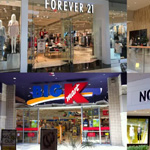
Blog
COVID-19 Best Practices for Retail Stores
August 24, 2020

Preventing the spread of COVID-19 is not only an important public health goal, it is imperative for avoiding future lockdowns that would threaten operations for retail stores and other businesses. As such, it is vital that owners and operators of retail outlets take added precautions to keep their customers, their staff, and their businesses safe. These COVID-19 best practices for retail stores are derived from a variety of sources including Health Canada, but retail owners are always encouraged to carefully review their sanitation practices to ensure they create a safe environment regardless of the nature of their business.
First, it is recommended that retail stores develop a regular sanitation schedule that includes thorough disinfection of high-touch surfaces and public spaces. Cleaning surfaces with a Health Canada approved disinfectant or detergent that removes visible contaminants is paramount. In many cases, once visible soil is removed from surfaces it is necessary to disinfect the surface again and allow it to dry completely. Always follow manufacturer instructions on how to use disinfectants as different solvents may have different application recommendations. For example, some disinfectant wipes require more contact time or dry more quickly than others – until the surface is completely cleaned and dry, it is not disinfected.
Additionally, it is important to understand the difference between disinfectants and sanitizers. Disinfectants tend to be more highly concentrated, require more contact time than sanitizers, and may need to be rinsed from surfaces. To add another layer of complexity, not all disinfectants and sanitizers are approved for use against COVID-19, so retailers are encouraged to verify with their suppliers whether the disinfectants and sanitizers in use are effective in eliminating COVID-19.
There are also different cleaning recommendations for food and non-food contact surfaces. For food-contact surfaces, retailers must use products that are approved for such surfaces. Most often these cleaners will be classified as sanitizers. Non-food contact surfaces should be cleaned with disinfectants. Regular disinfection of high-contact surfaces including debit/credit point-of-services machines, doorknobs and automatic door switches, bathroom surfaces including flush handles and faucets, fridge doors, etc. is paramount.
Depending on the nature of your retail outlet, you should also consider requiring staff and patrons to wear masks. If maintaining 2m of physical distance between staff and patrons is not possible, masks provide an extra element of protection. Plexiglass barriers at cash registers are also becoming commonplace and provide an effective droplet barrier between staff and customers. Finally, all staff should be required to stay home whenever they are feeling ill. Self-assessment tools provided by local governments should be reviewed before every work shift and staff that experience COVID-like symptoms must not report to work.
Following these recommendations cannot eliminate the potential for the spread of COVID-19, but they can significantly mitigate the risk.

